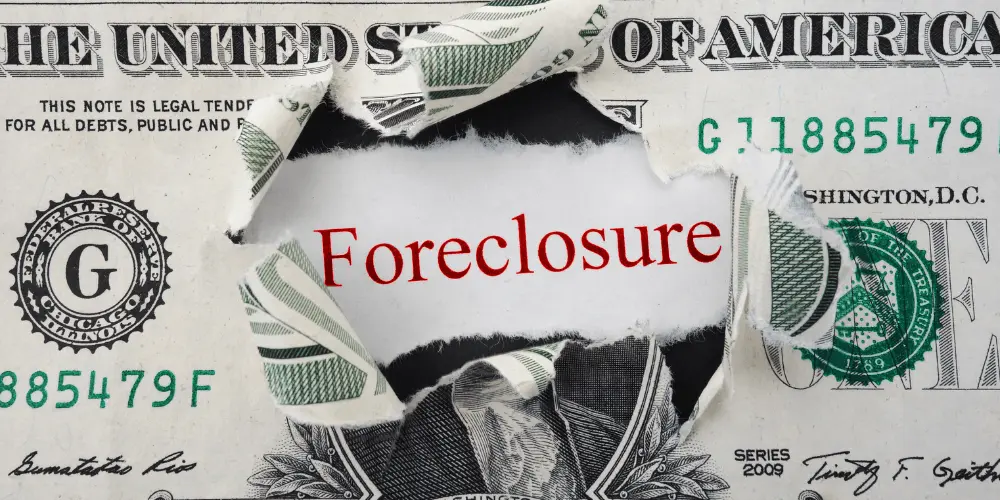
The foreclosure timeline outlines the step-by-step process that a lender follows when a homeowner cannot keep up with their mortgage payments. While timelines can vary depending on where you live and what type of foreclosure is used, the process typically begins after a borrower misses several consecutive payments.
Foreclosure doesn’t happen overnight. It usually begins after about 90 days of missed payments, though the exact date can vary. Once the lender starts the process, a formal timeline begins, and each step must be completed according to local law.
If you’re struggling with payments, understanding the foreclosure process early can help you avoid costly outcomes.
Here’s a general idea of what the foreclosure process might look like. Timelines can vary by state and loan type, but these are common steps:
The first stage of any foreclosure timeline starts when a borrower misses a mortgage payment. If the problem isn’t resolved quickly, a late fee is typically added, and the mortgage becomes considered delinquent.
After consecutive weeks of missed payments, the mortgage company may send letters urging you to catch up. By the third missed payment, many lenders will officially begin the foreclosure process.
At this stage, it’s important to contact your lender immediately. The CFPB explains the foreclosure timing and encourages homeowners to act early.
Before formal legal action, most lenders send a notice informing you that you are behind on payments. This letter might include loss mitigation options like loan modification or forbearance.
You still have time to act. It’s not too late to pay what’s owed or explore help through your mortgage servicer, housing counselor, or attorney.
Lenders often have the power to help you avoid foreclosure, but the responsibility falls on the homeowner to contact them. Preventing foreclosure is possible with the right plan.
A judicial foreclosure is handled through the court system. The lender must file a lawsuit, and the homeowner is given the chance to respond before a judge issues a judgment.
If the court rules in the lender’s favor, a foreclosure sale date is set. Legal fees, business costs, and department expenses are often added to the balance owed.
This process follows a strict legal process, including the opportunity to contest the foreclosure, seek mediation, or negotiate a repayment plan. L.A. County offers guidance for borrowers facing court proceedings in California.

A non judicial foreclosure skips the court system altogether. If your mortgage includes a power of sale clause, the lender can start foreclosure after following state-specific procedures.
You’ll still receive formal notices and have a chance to act, but there’s no judge involved. These cases move faster, so it’s important to understand the timeline and respond promptly.
Michigan.gov’s foreclosure stages explain how their state's process typically works.
Your mortgage servicer manages payments and communication. They’re often different from the mortgage company that originally issued the loan. They’ll be the first to notify you about missed payments, added fees, or upcoming foreclosure steps.
You may also hear from a third-party department handling communication or a collections company. These contacts might feel overwhelming, but staying informed is key.
When a foreclosure is finalized, the property is typically sold at public auction. In many states, this is known as a sheriff sale, conducted by a local sheriff’s office.
The home is sold to the highest bidder, who receives a sheriff’s deed as proof of ownership. The sale date is announced in advance, with a brief wait to give the homeowner one last chance to catch up or request a postponement.
Fannie Mae’s servicing guide outlines how these auctions are typically handled.
After the sale, foreclosure work may begin to prepare the home for resale. This could include repairs, cleanup, or securing the property. At this point, the borrower may receive a writ of eviction if they haven’t left voluntarily.
This is also when possession legally transfers. If you’re still living in the home, eviction could occur shortly after the deed is transferred.
Some states offer a redemption period after the foreclosure sale. This gives the former homeowner time to pay off the debt in full and reclaim the property.
You may need to cover the entire loan balance, plus fees, interest, and legal costs. In some cases, you can use collateral or refinancing to help fund the repayment.
Read more about the mortgage redemption period and how to exercise your rights.
After foreclosure, the home is usually transferred to a lender, new owner, or government agency. In some cases, it’s sold to a third-party purchaser. If the original borrower hasn’t moved out, they’ll face eviction proceedings.
Local urban development programs may offer assistance, especially if the homeowner qualifies for aid. Sometimes, housing counselors or nonprofit legal services can help delay or prevent final possession.
Once the foreclosure sale is complete, legal foreclosure proceedings come to an end, but the impact continues. In many cases, the property is purchased by the lender, a private buyer, or a government agency. The borrower no longer holds the title, and the deed is updated accordingly.
If the home is foreclosed and you’re still living there, you may receive a writ of eviction shortly after the sale. In the past, this was often delayed, but now it can happen quickly. This is especially true in non-judicial states, where the process moves faster and involves fewer legal steps.
You may still be responsible for leftover debt, especially if the sale didn’t cover what you owed. Some states allow deficiency judgments, depending on the loan terms and whether the property had default protections like mortgage insurance.
This stage is often called the post-sale or eviction phase. The lender will seek to recover as much money as possible, and may involve a collections company to pursue balances due. While this is uncommon for FHA-insured loans, it’s still possible.
Generally, borrowers in this situation should speak to a housing counselor or legal aid agency for help understanding their options. For example, some homeowners qualify for emergency rental assistance or relocation programs.
If you’re unsure what comes next, speak to a HUD-approved counselor to explore your rights and resources.